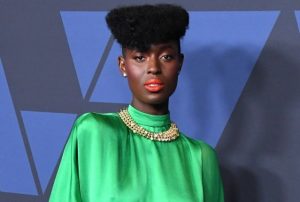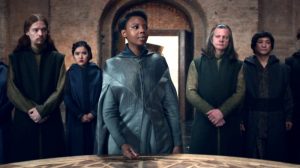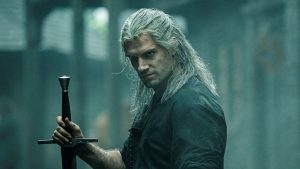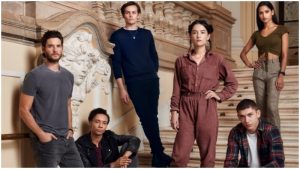Right up front, I’m going to express my disappointment that my review of Netflix’s new original series is not quite as glowing as certain others are. Not only do I disagree with Rotten Tomatoes’ 89% Fresh rating, but I don’t understand it. I do notice, though, that the series is not rated Certified Fresh, which is some relief to me, writing this ballad of a sadly underwhelmed audience-member. Audiences across the world seem to be greatly enjoying The Dark Crystal: Age Of Resistance, but it’s rather hard to figure out whether that excitement comes from hardcore Dark Crystal fans or mainstream Netflix-watchers. I’m going to guess the former, because this show seemed, at least to me, to have very little mainstream appeal. Let’s discuss.
Firstly, puppets. Puppets can be wonderful fun, and, if done right, with charm and humor, they can even be fun to watch onscreen: countless Muppet movies (great Muppet movies, at that) and the huge success of Sesame Street prove that. But unfortunately, charm and humor are two noticeable absences in the Dark Crystal franchise, which is both grim and serious, and incredibly macabre – even nightmarish, but we’ll get to that. Where Jim Henson’s other movies had fun and dance, musical numbers, cameos from human actors and a general atmosphere of carefree recklessness, his original Dark Crystal was an attempt to pivot away from that image. It deserves praise for the fact that it was one of the first big fantasy epics, and its creation was a huge undertaking. However, when it released in 1982, it was not the massive success that Henson had hoped for, receiving a mixed response from both critics and audiences. Those who did fall in love with it, however, never fell out of love, and so the new Netflix prequel has a small, but loyal niche fanbase that it wants to attract. As for me, I have never loved the original movie: I hated it, in fact. The puppets, with their strange, glassy eyes and grotesque rogues gallery of bird-like Skeksis, all living on what was supposed to be a barren alien planet – not my thing.
That’s probably at least partly why this new series just wasn’t for me. The puppets haven’t changed in the decades since the original movie was released. I am not an expert on puppet technology, but as far as I can tell, an effort has been made to use the same sort of techniques as Jim Henson did all those years ago: over-zealous loyalty to a project is not unheard of, and can be understandable, if said project doesn’t really require major changes for modern audiences to enjoy it. Dark Crystal, however, is outdated, and makes no effort to change that: the story is still a huge, intricate mess of mythology, religion, philosophy and fantasy cliches; the puppets are still obviously puppets, and their glassy-eyed stares remain their signature feature.
I intend no disrespect to the series’ puppeteers, who do an excellent job: their work is incredible, and I can’t imagine how difficult it must be. I also have huge respect for the amazing voice cast: many of the actors are quite good in their roles, though there are more than a few who only show up once or twice and have barely any dialogue: Alicia Vikander, Natalie Dormer, Hannah John-Kamen and Mark Strong are some of the latter – of the former, we have Taron Egerton, Anya Taylor-Joy, Nathalie Emmanuel, Donna Kimball and Lena Headey to thank, for making this show ever so slightly more entertaining than it would otherwise have been. I’ll spare some praise for Sigourney Weaver, who gets to narrate the opening of the first episode.
As for the characters these hugely-talented actors and actresses are voicing, well…watching their individual stories isn’t always quite as interesting as playing Who’s Who with the voice cast, but there are a few I can think of: Mother Aughra (Donna Kimball), the benevolent but cranky guardian of Thra, is especially fun to watch, and the puppeteers gave her enough quirky little traits, from facial movements to her distinctive style of dancing, that make her seem like an actual character, rather than some of the thin, underdeveloped cardboard cutouts that pass for protagonists in this series. Tavra, Seladon and Brea, the three sundered daughters of the All-Maudra (Helena Bonham-Carter), are also especially interesting, and the way that their stories diverge and reunite is imaginative. But of these, only Brea (Anya Taylor-Joy) is a main character: for the most part, we’re stuck watching Rian (Taron Egerton) either walking from place to place, or stopping to share his memories with literally everybody he meets (after the third or fourth of these long, redundant, dream-sharing encounters, I was ready to turn off the show). Deet the Grotten (Nathalie Emmanuel) is somewhat more interesting, but her story takes a bizarre and unexplained twist in the last few episodes. As for Maudra Fara, she’s actually quite likable, which is somewhat conflicting, considering that she speaks with the villainous voice of Lena Headey, who portrayed the evil Cersei Lannister on Game of Thrones.
Talking of villains, it’s time to discuss those which dwell in Thra, and present the main threat to our Gelfling heroes. The Skeksis, repugnant vulture-people from another world, who have subjugated the Gelfling people and enslaved the Crystal of Truth to their will. I want to take a moment to point out that, somehow, the Gelflings, who are shown to have vaguely-human aesthetics and personalities, are completely oblivious to the fact that gigantic, hulking anthropomorphic vultures living in a claw-shaped Gothic castle might be evil. The Skeksis are absolutely revolting and repulsive, with zero redeemable qualities, and no actual personalities to speak of – so why, then, do we spend about fifty percent of the show’s screentime watching them squabble pointlessly, in a boring parody of Game of Thrones‘ layered dynastic rivalry and wars for the throne. There are so many pointless scenes of Skeksis eating, I thought I might lose my mind: if not my appetite. This is a personal preference, but I cannot stand two types of villain: (a) the CGI-construct with no personality who yells “Kill them all!” and dumb stuff like that (Azog from The Hobbit fits the bill), and (b) pompous, swaggering, disgusting buffoons (such as the Master of Lake-town from The Hobbit). The Skeksis combine the worst elements of both of these villain cliches, and take them to the next level. Only The Hunter even came close to being an intimidating antagonist, but his supporting character-status was undeserved and infuriating.
All this is truly saddening, because the Skeksis could have been excellent. If I had been the showrunner, I would have probably changed their appearance, first of all: wouldn’t resplendent peacock-feathers or gaudy, glorious plumage have done the trick of showing Skeksi greed and avarice just as well as bald, wrinkly faces and harsh, raspy evil laughter? This is a prequel, for Thra’s sake – they could have done anything with the Skeksis! The possibilities were endless. There were themes and shades of some of the great fantasy villains at work here, but none ever reached full potential: the Skeksi fear of death and their desperate attempts to evade it, for example, resembled the actions of Tolkien’s Numenoreans, clinging to life at all costs, warring on the earth and the gods in the faint hope of winning immortality.
It’s not the only Tolkien theme glimpsed in Age of Resistance: in the very first episode, while a Skeksi narrates about the inevitability of evil and how the strong will always conquer the weak, we watch a montage which proves otherwise, showing various Gelfling heroes starting out on their individual quests for justice and truth, in a reverse of Sam Gamgee’s “stories that really matter” speech at the end of Peter Jackson’s The Two Towers (which is also on Netflix, now, by the way). The series has very Tolkienesque ecological messaging, and the Gelflings, bound up with the fate of Thra, are nothing if not a hybrid between Tolkien’s hobbits and elves. But sadly, these themes get buried under so many fantasy plot points (magic sword! prophecies! mystic arts!) that it’s hard to find them at first.
All in all, the series is far too long. I flew through the first three episodes, even if they were rather weak, and the fourth through sixth episodes were actually quite good: seven through ten, however, drag the story out far too long. The eventual finale lands with a resounding thud: a more disappointing climax, I could not envision. That might be because the series tries too hard to make you want to go watch Dark Crystal after it’s finished, which is something I do not want to do, and don’t ever want to do again. So many things are left unanswered, and the final showdown between Gelflings and Skeksis is so underwhelming – was it because full-out puppet war is rather hard to manage? Did the budget not allow for it? I don’t know: all I can say for certain is that I was hugely disappointed.
It’s unfortunate. I really wanted to like it. The trailers showed off stunning visual beauty, Gelfling heroics, and epic warfare: unfortunately, in the actual series, these things are few and far between. If you’re a puppet nerd, a hardcore sword-and-sorcery fan, or a Henson completionist, I urge you to watch this series, since you might enjoy it far more than I did. But all that I’m left with is the feeling that I wasted time on this series, when I could have been…oh, I don’t know, watching The Two Towers instead. It’s all the same stuff, but it doesn’t have creepy vulture-puppets.
Series Rating: 5/10





